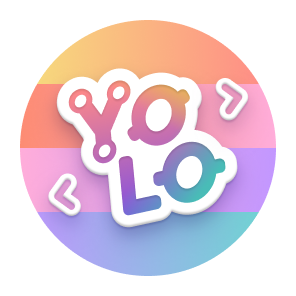Hello! Thank you for visiting my profile. I'm Robert Koifman. I specialize in .NET Core platform and IoT. If these areas align with your interests, we can engage in discussions and knowledge sharing. For the last few years, I’ve been working on Softnet Free, a platform that provides TCP/IP-enabled devices with a medium for remote communication over the Internet. The platform is freely available under the Apache 2.0 license. If you are a DIY developer, you can utilize it for enabling remote communication with your microcontroller. If you are a startup developing an Internet-enabled IoT product, Softnet Free can help you save a lot of costs. And if you're a device manufacturer, you can consider using this platform for your products. Visit the project's home page to learn more about Softnet Free. "The concept of Softnet Free" reveales the concept of the platform. What I want from you is your comments, offers and contributions. You are welcome to discussions, where you can ask questions, explore examples, etc. And here's my email: robert.koifman (et) gmail.com.
The Internet of Things is essentially a concept that describes a system of interconnected devices that use the Internet for communication. But, oddly enough, one of the primary challenges of IoT is precisely ensuring this Internet-based communication between devices. Modern TCP/IP-enabled devices, even those built on low-cost microcontrollers, might be powerful enough to implement on-device business logic and communicate with clients over IP networks. Typically, they operate in dynamic IP environments, which pose significant connectivity challenges. In most cases, interaction with such devices is impossible without the use of a specially designed communication platform. In fact, along with connectivity, there is a set of additional tasks that an IoT platform is assumed to solve such as security, access control, device administration, shared access to devices, etc.
In the world of IoT, when you start implementing your idea, the first question is which platform aligns with the requirements of your project. Ready-to-use platforms may already exist for some popular applications, for example, platforms designed for controlling drones over 4G networks. But new ideas in IoT are born all the time, and possibly you'll have to adapt some kind of a general purpose platform for your product or even create one from scratch. For simple applications, there are plenty of platforms that utilize messaging protocols like MQTT, while advanced platforms may utilize peer-to-peer streaming protocols like WebRTC. However, it may be crucial whether the platform is compatible with resource restricted hardware and operating systems that run on this hardware such as FreeRTOS, Zephyr, RIOT, Contiki and others.
Device manufacturers often leverage cloud platforms to provide their products with networking capabilities. Typically, a cloud platform facilitates vertical connectivity for devices to perform cloud-specific operations like data storage, analytics, and AI. However, some IoT applications may also require the platform to support horizontal connectivity or direct communication between the devices themselves, bypassing the cloud server. A simple analysis reveals that device-to-device communication tasks can be organized, structured and implemented within a single unified solution. These considerations allow me to consider Softnet Free as a candidate for this unified solution. It currently offers a management tool for setting up IoT projects via a web interface. However, Softnet Free, empowered with an API for management tasks, could be deployed as a service to serve other platforms that require inter-device networking capabilities. In this way, Softnet Free could significantly reduce the cost of developing cloud platforms for specific IoT applications.
The IoT landscape is incredibly diverse, offering a plethora of technical solutions. However, in the IoT domain, there is a strong demand from both developers and users to incorporate well-established software technologies and user experience principles typically found in traditional software products. Nowadays, HTTP-based technologies form the backbone of the most prevalent IT ecosystem. Many application layer protocols are built on top of HTTP. Therefore, numerous embedded TCP/IP solutions encompass HTTP and WebSocket protocols. Some IoT developers have also a temptation to embrace modern front-end technologies such as React and Angular. Apart from HTTP and related products, other prominent technologies such as audio/video streaming (RTSP+RTP, SRT, etc.), remote device management (SSH, VNC, RDP) and others are also in demand in IoT. However, the primary challenge in adapting these traditional technologies lies in addressing issues related to remote communication between devices, as well as concerns pertaining to security, access control and device management. To address these issues, I started developing a new platform mechanism called Protocol Extensions. This mechanism aims to ensure seamless integration of widely used communication protocols into the IoT/IIoT domain.

